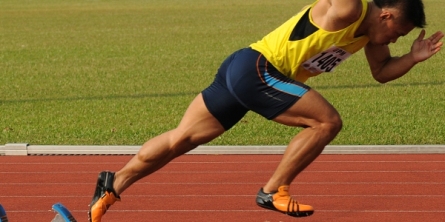Strength training for athletes is an extremely complex system that involves careful design, organization, and a long look at a needs analysis.
Despite what some people may think, strength and conditioning for high-level athletes is not just throwing a barbell on one’s back, slamming medicine balls, and loud music. Your average personal trainer is simply not trained extensively enough to be able to properly train an athlete looking to make significant gains in their respective sport.
Now, that is not a knock on regular-Joe certified personal trainers, but a large compliment to personal trainers, strength and conditioning professionals, and other certified individuals who go above and beyond to be the best at their craft. After all, that’s what this is–an art form.
In part one of this series, I am aiming to explain the first “period” of Periodization, why professionals use it, how it works, and what it is comprised of.
Periodization is the gradual cycling (maybe days, weeks, or months) of specificity, intensity, and volume of training to achieve peak levels of fitness for the most important competitions. Training shifts from non-sport-specific activities of high volume and low intensity to sport-specific activities of low volume and high intensity over a period of many weeks.
A macrocycle (usually a year’s training) is divided into two or more mesocycles that revolve around dates of major competitions. Each mesocycle is subdivided into periods of preparation, competition, and transition. Ideally, an athlete will complete a mesocycle of training prior to each major competition, with variations for lengthy competitive periods.
Periodization for athletes should start with a prep period in which there are three main phases.
Preparatory Period
Phase 1: Hypertrophy/Endurance
The hypertrophy/endurance phase occurs during the early stages of off-season prep. It may last from 1-6 weeks, depending on the condition of the athlete. This stage starts at a low intensity with high volume. In other words, it should involve a lot of sets and reps with lower weight. The goal for this phase of training is to develop an endurance base for future, more intense training.
Training days can be full-body routines or split (upper body day and lower body day) routines. Exercises should be on the simpler side, and should not be highly tasking (i.e. no snatches, power cleans, or other movements that are highly complex in nature).
Phase 2: Strength
In this phase, running programs progress to interval sprints of moderate distance, plyometrics activities become more complex, jumping activities can be introduced, and weight training becomes more specific to the event. Intensity level is gradually increased to loads of over 80% of the athlete’s 1RM (rep maximum), or in the 5RM to 8RM range, and only a moderate volume of training is performed.
Phase 3: Power
As the cycle progresses, load increases to over 90% of 1RM (2Rm-4RM), and speed work intensifies to near contest pace (I prefer barefoot sprints on FLAT grass fields; but, always check your path for any unwanted surprises). Full recovery is allowed between bouts of exercise, and speed training drills, which may include sled towing, sprints against resistance, and uphill and downhill sprints, are incorporated. Prowler sprints and sled towing will forever be my favorite power exercise. There is nothing more challenging to the mind than trying to convince yourself you can do ONE MORE sprint when you are completely gassed.
Next week—-Part 3: Competition Period, Flexibility Training, and Plyometrics.
“You can’t climb the ladder of success with your hands in your pockets.”
–Arnold Schwarzenegger
Move to the beat of your own drum.
Jared

